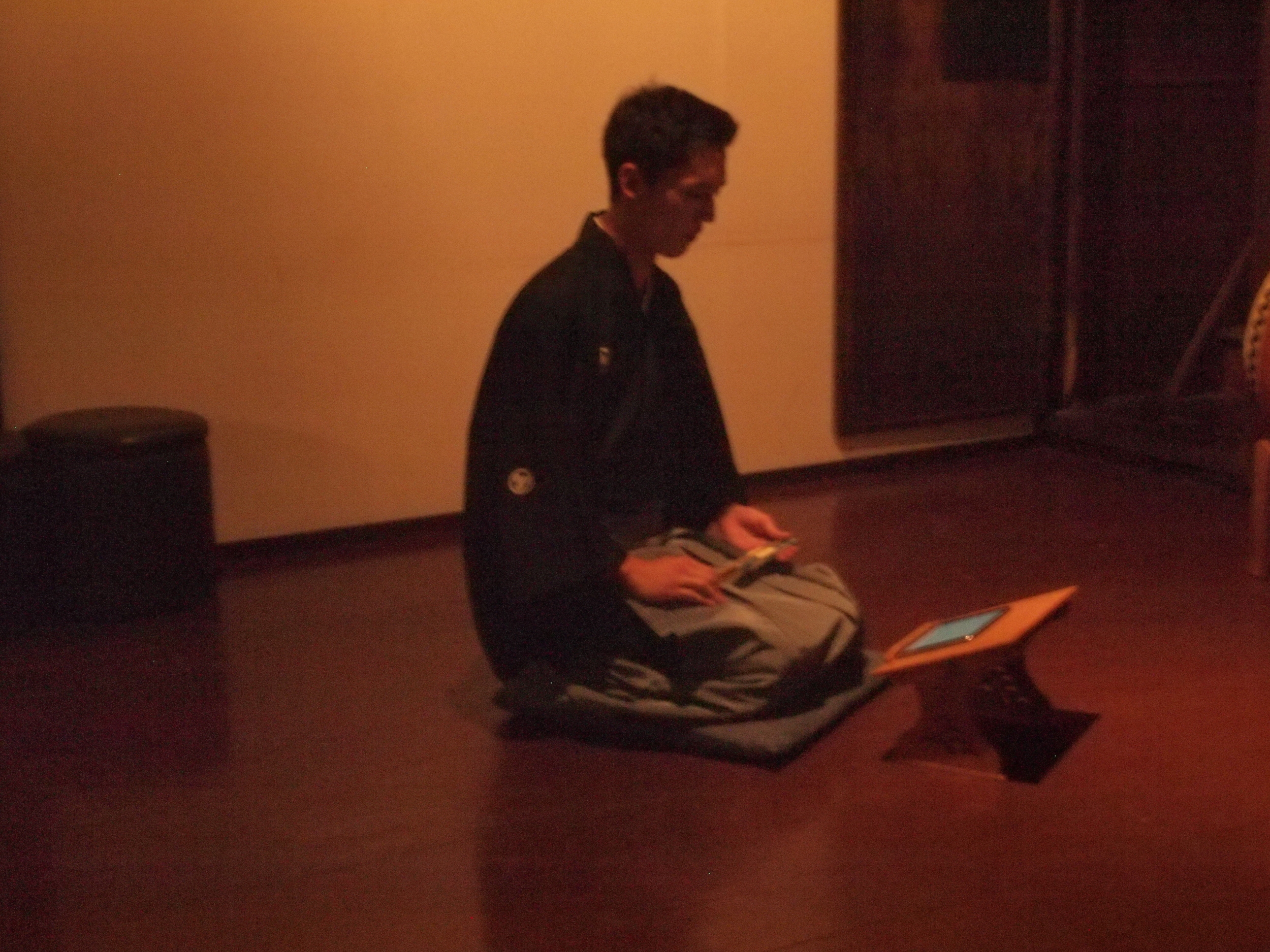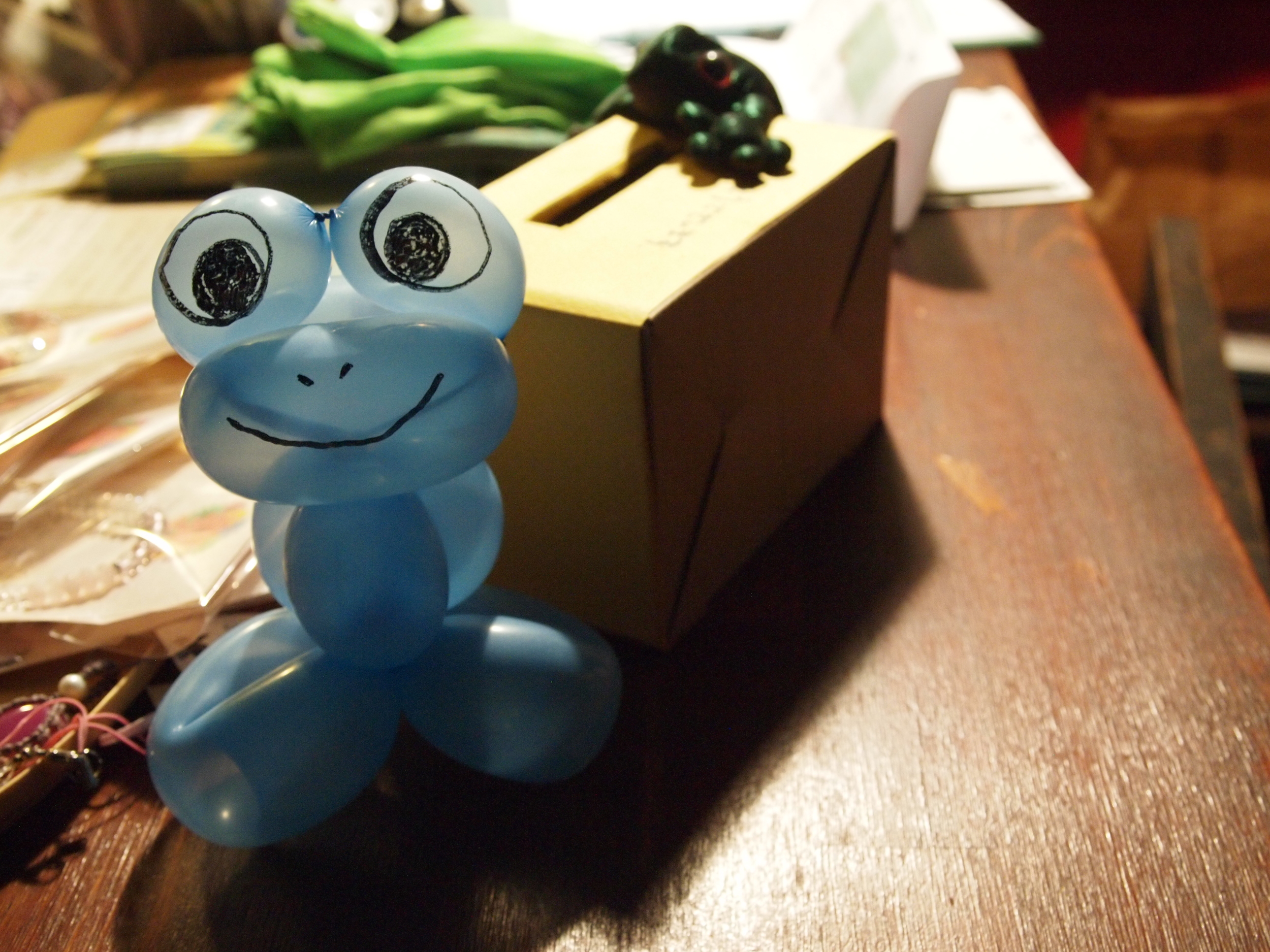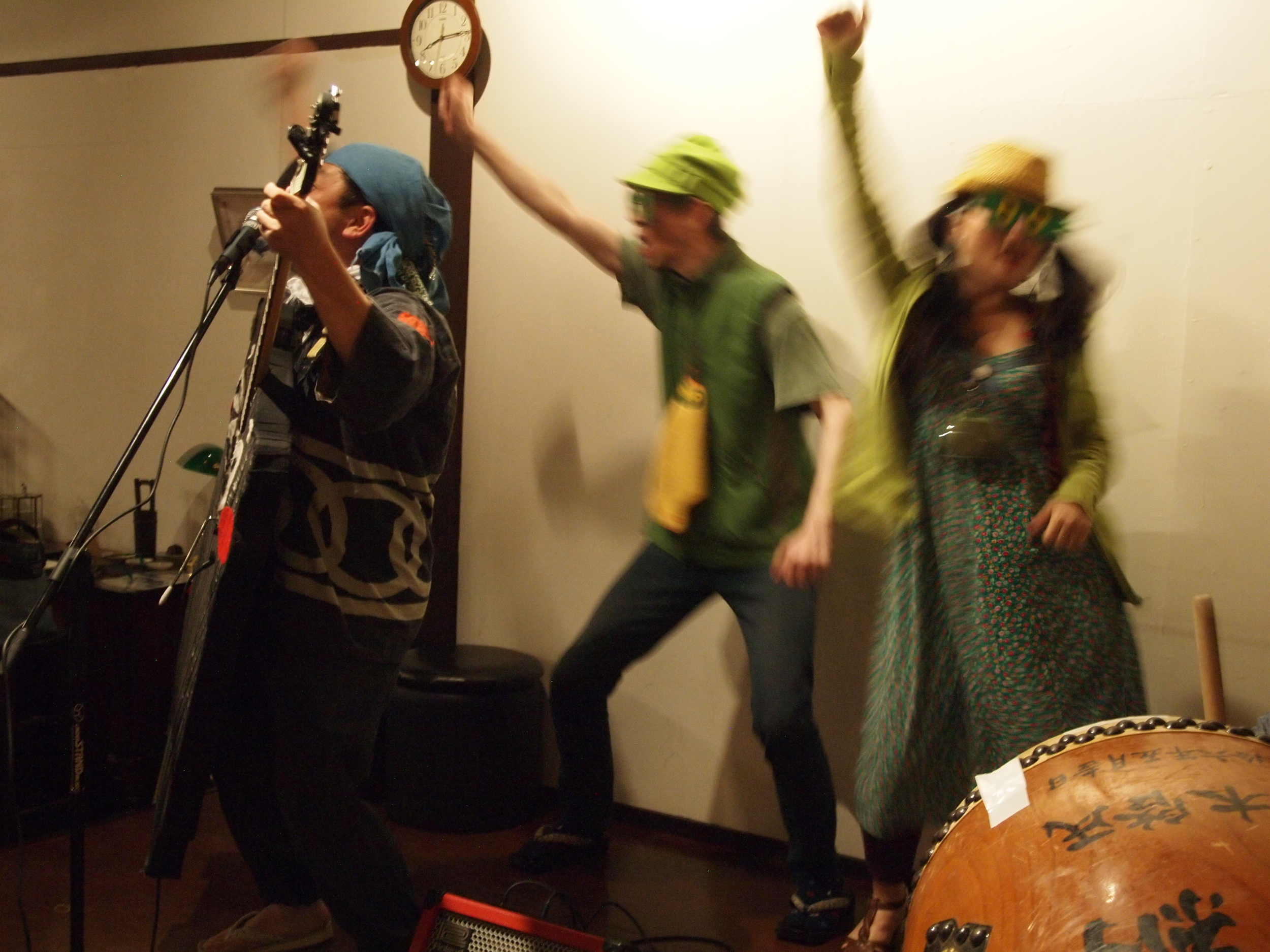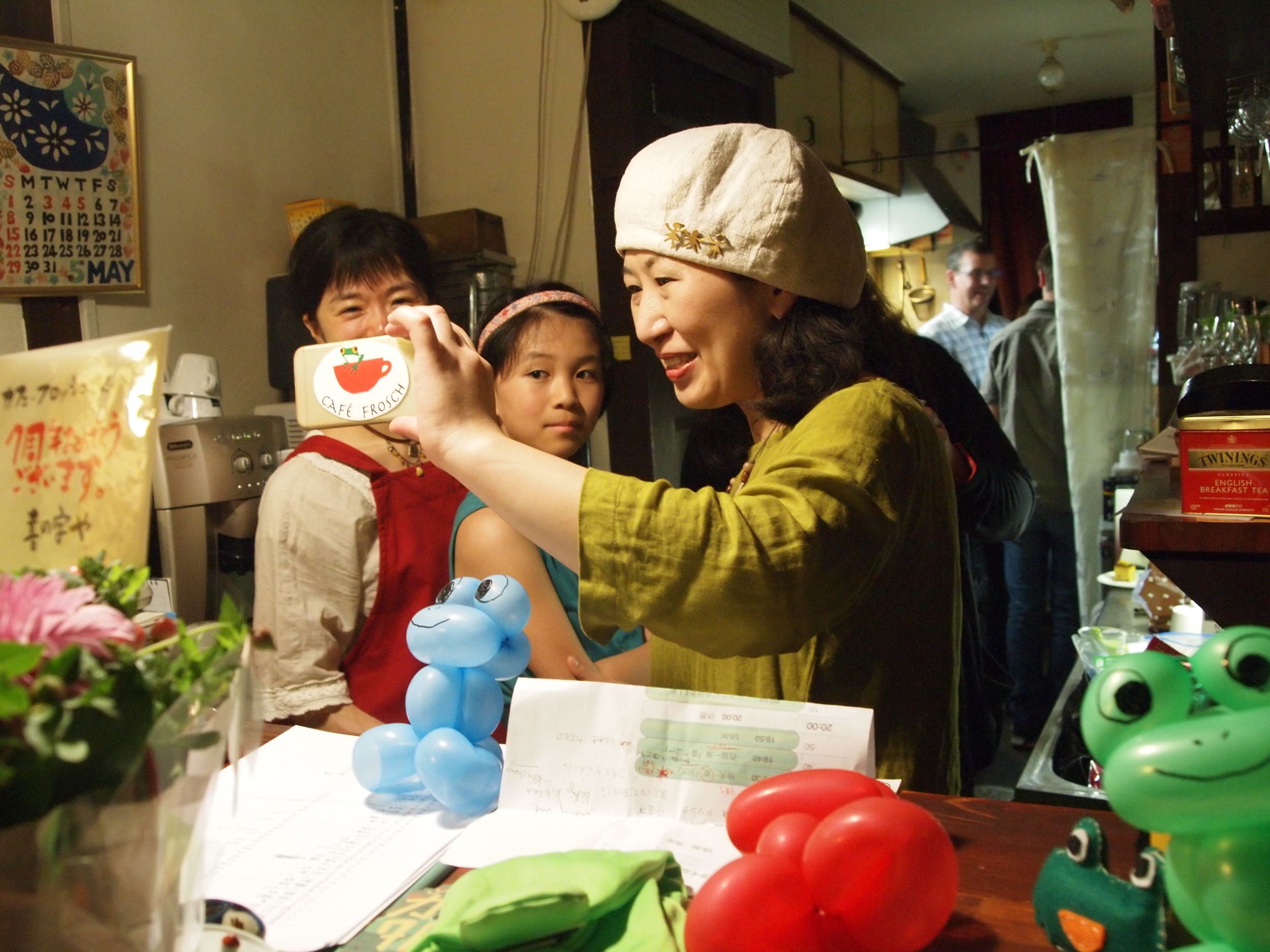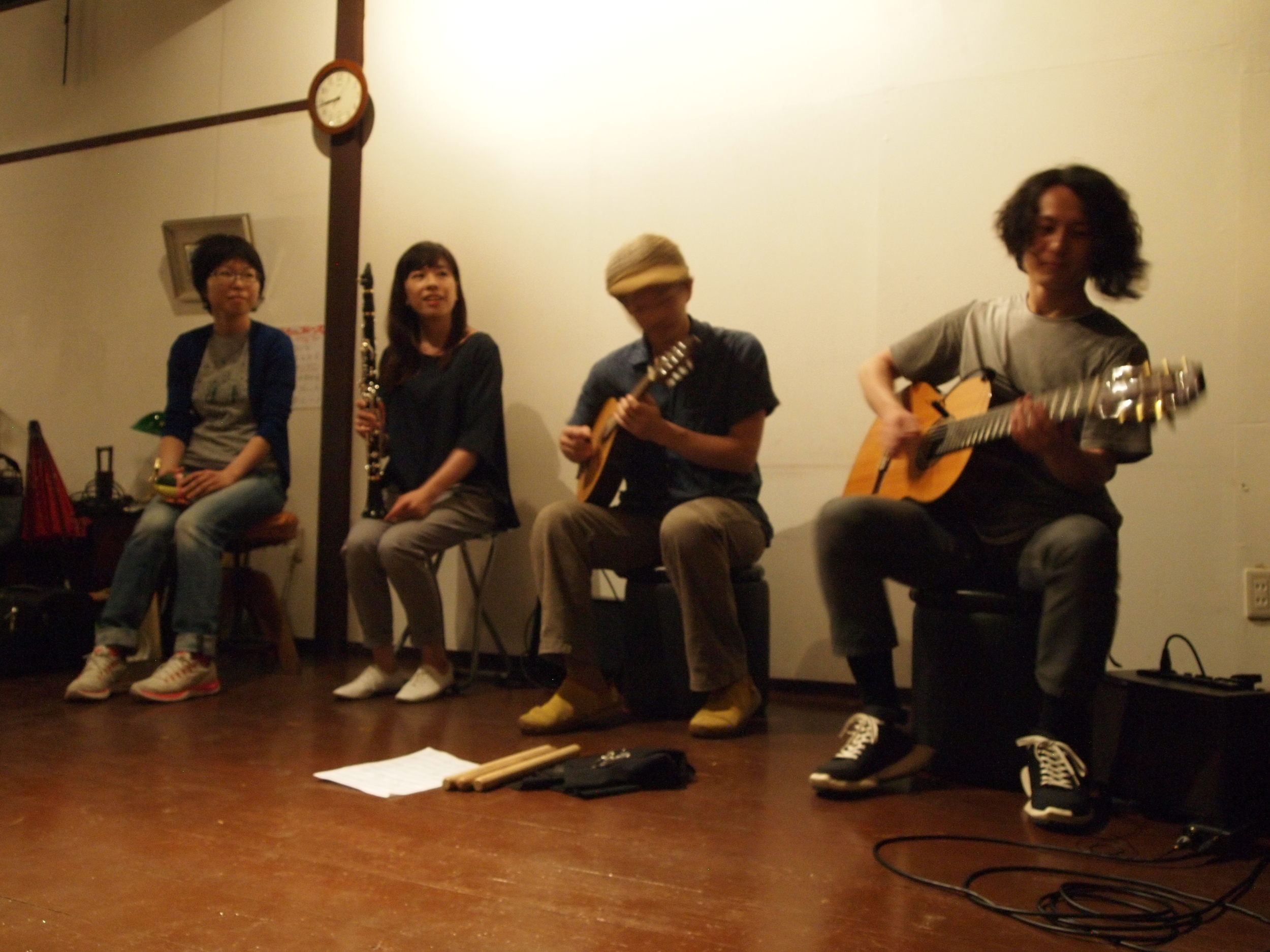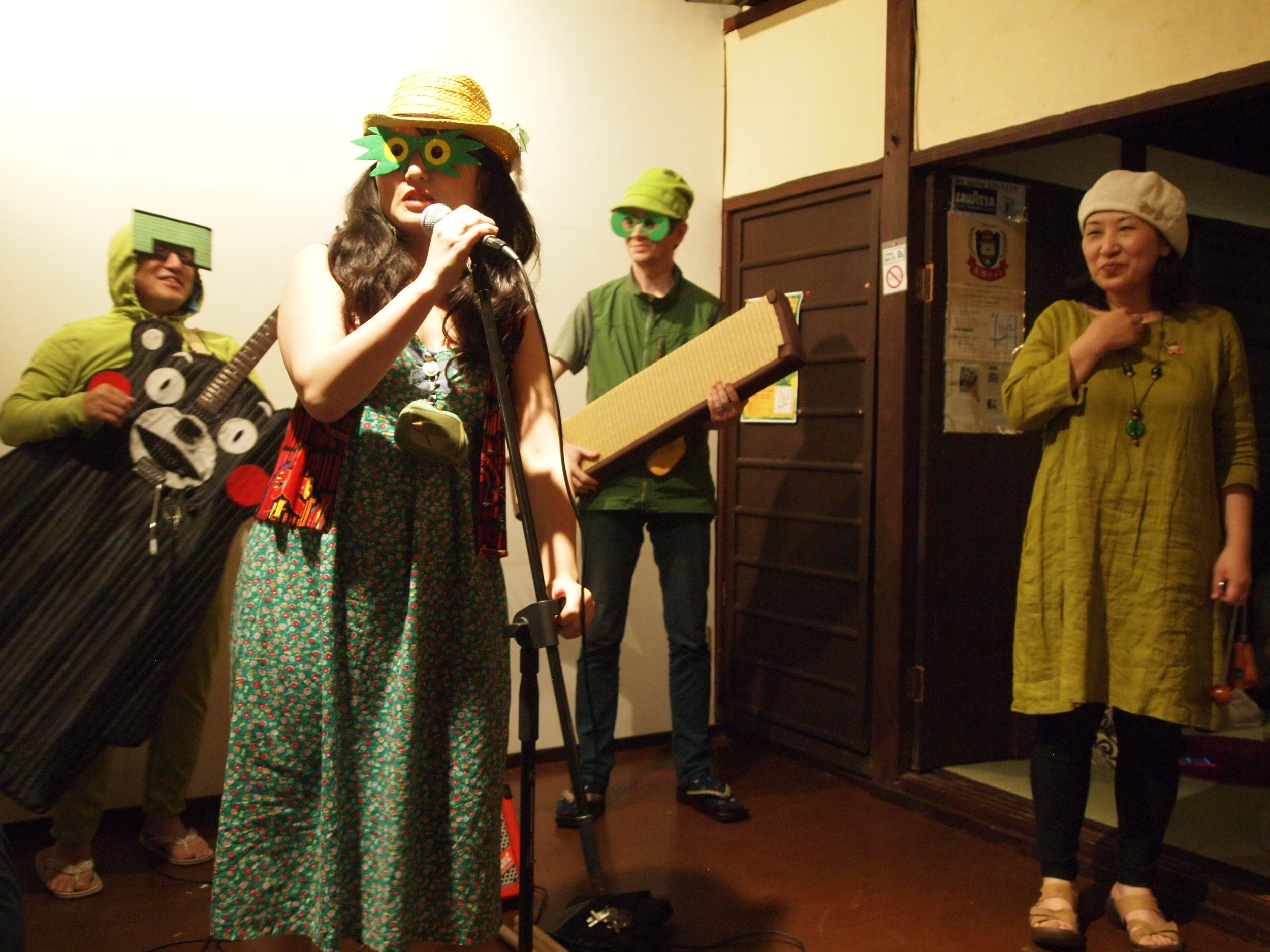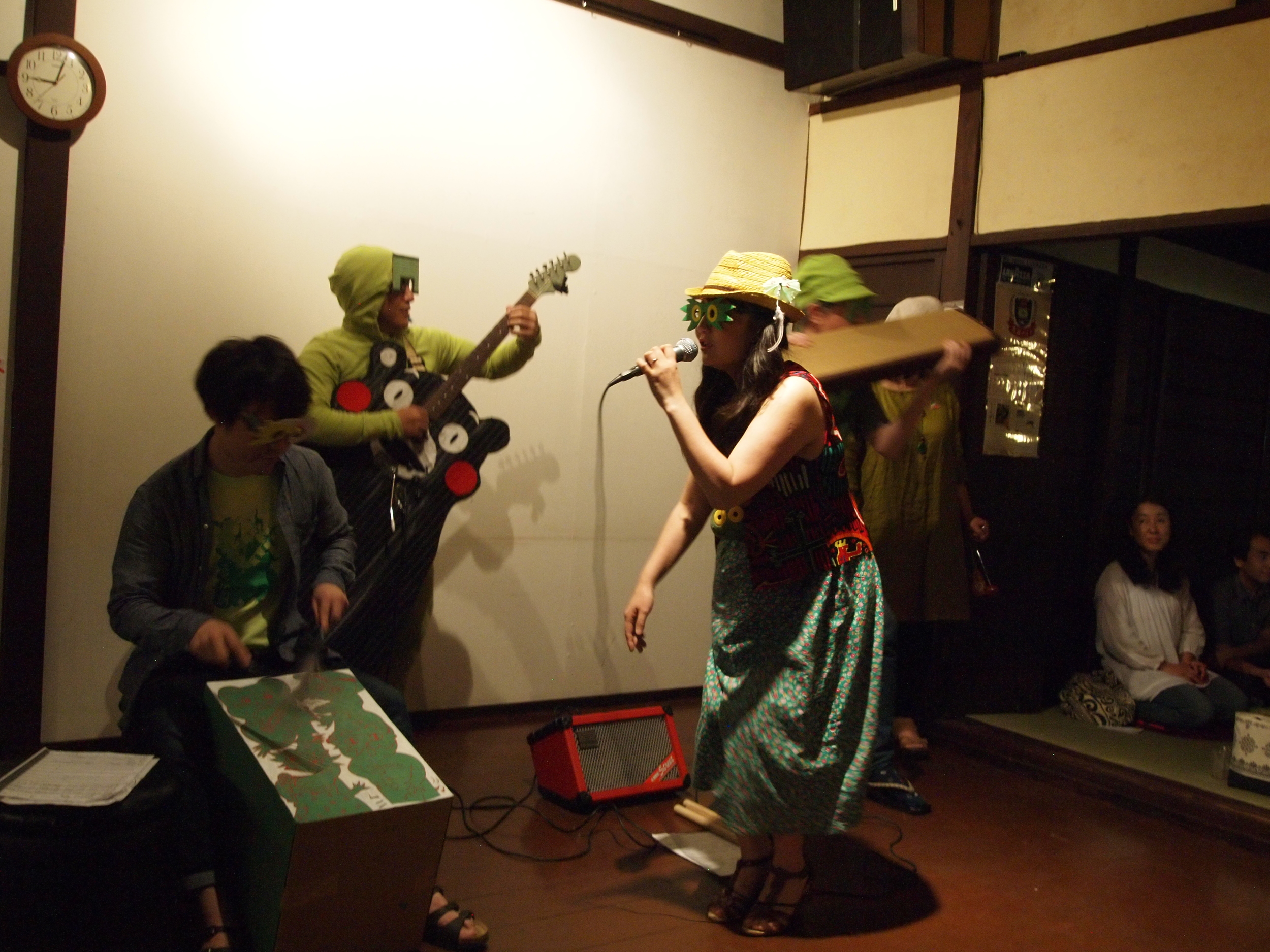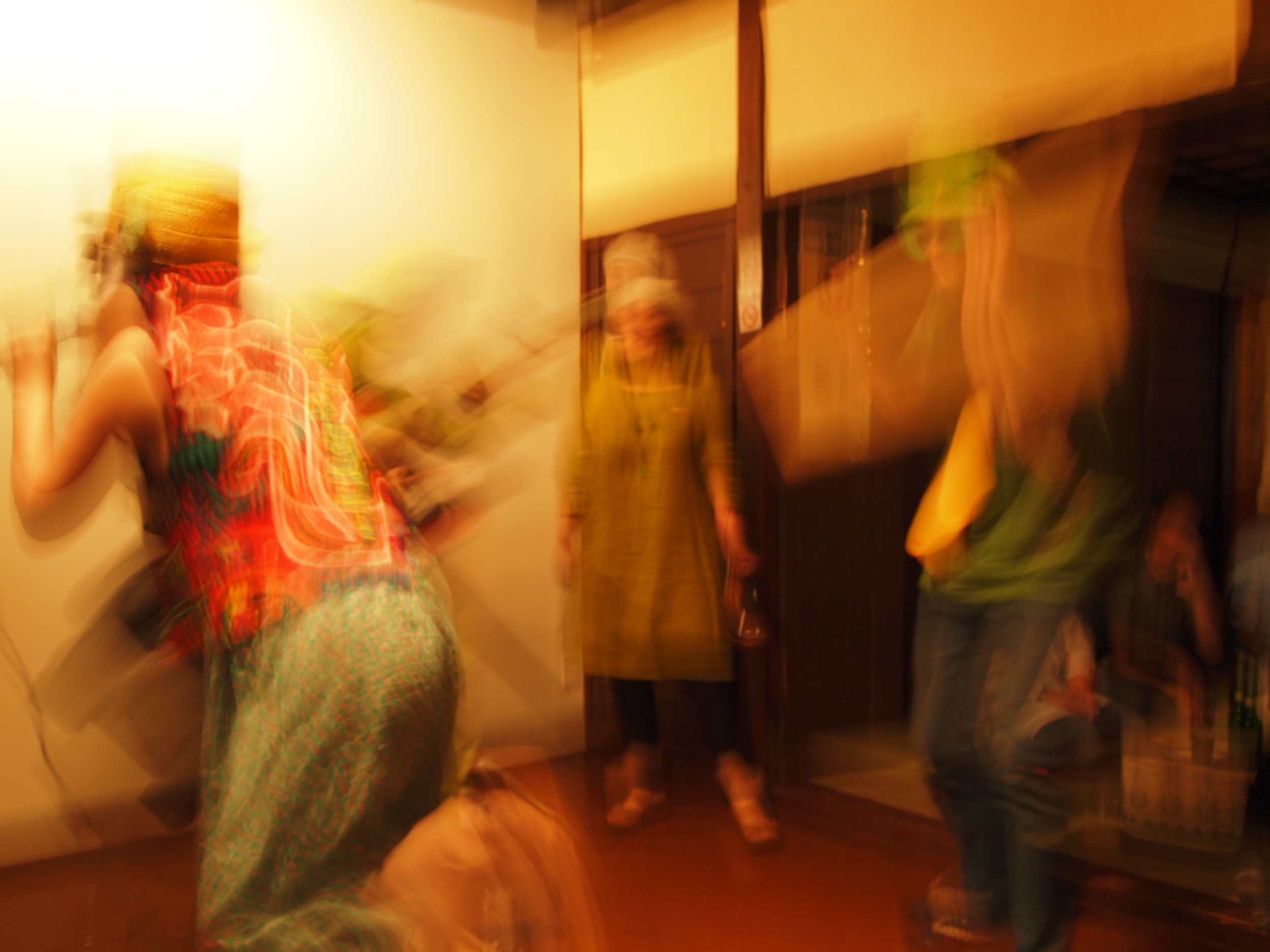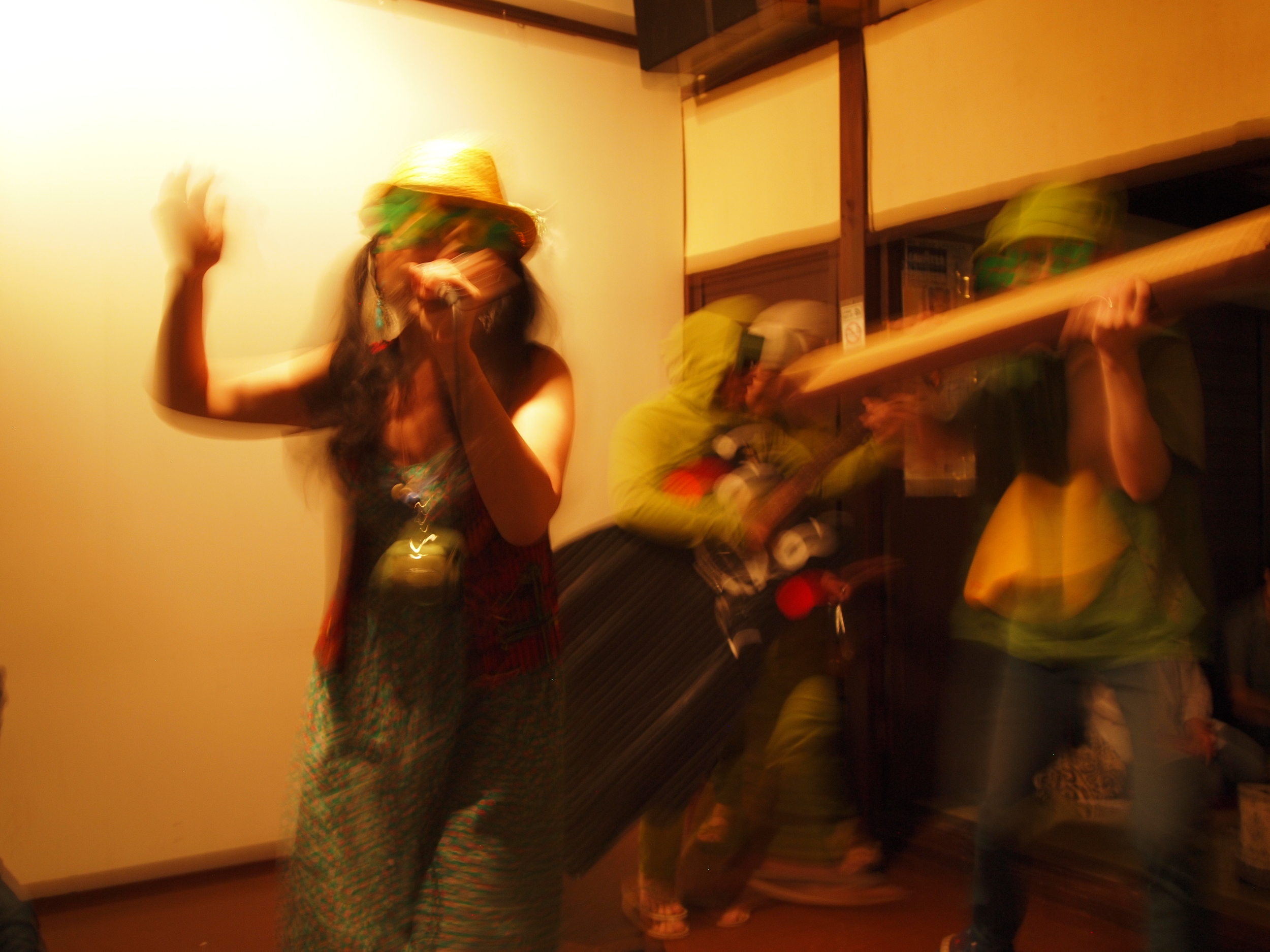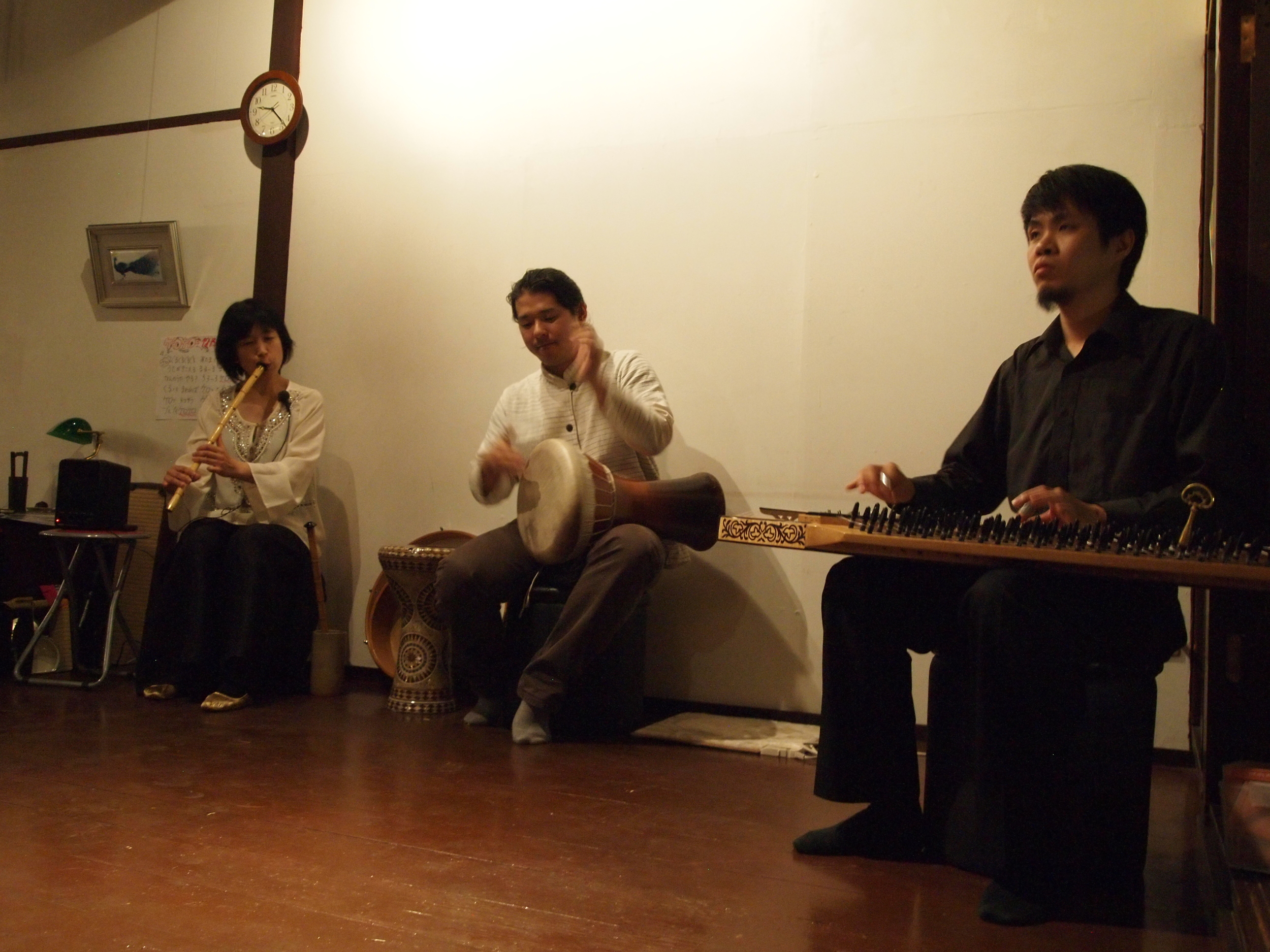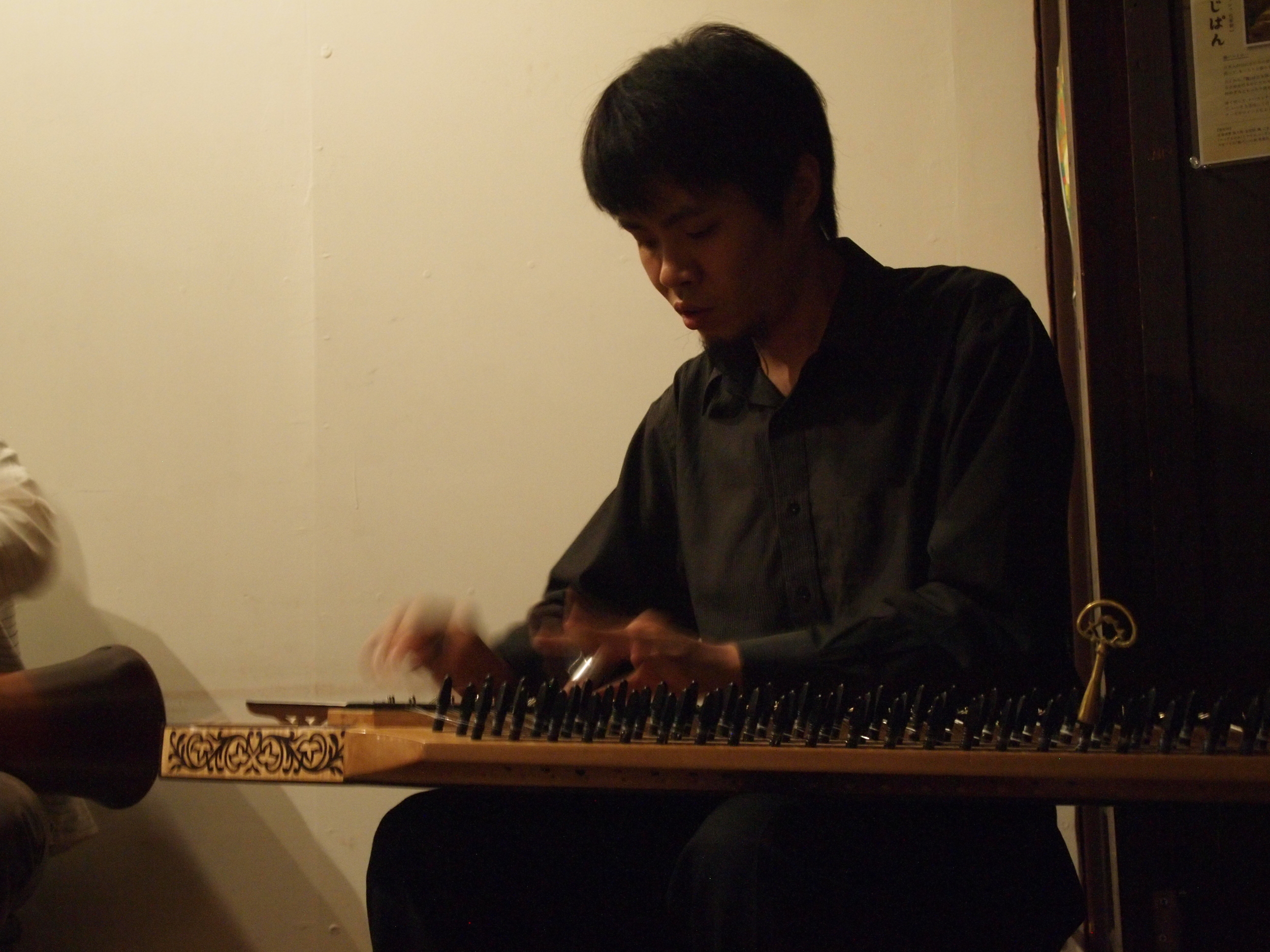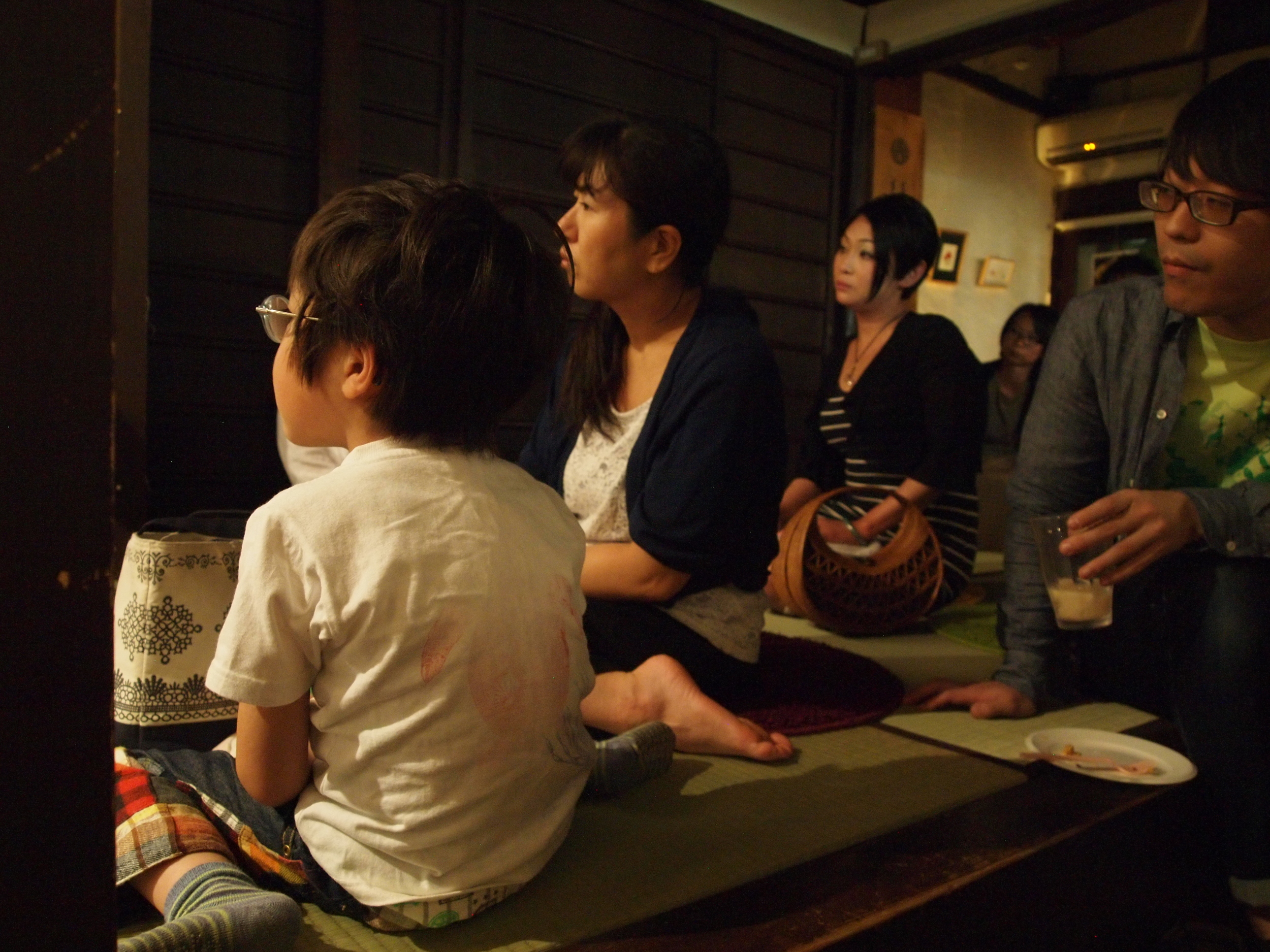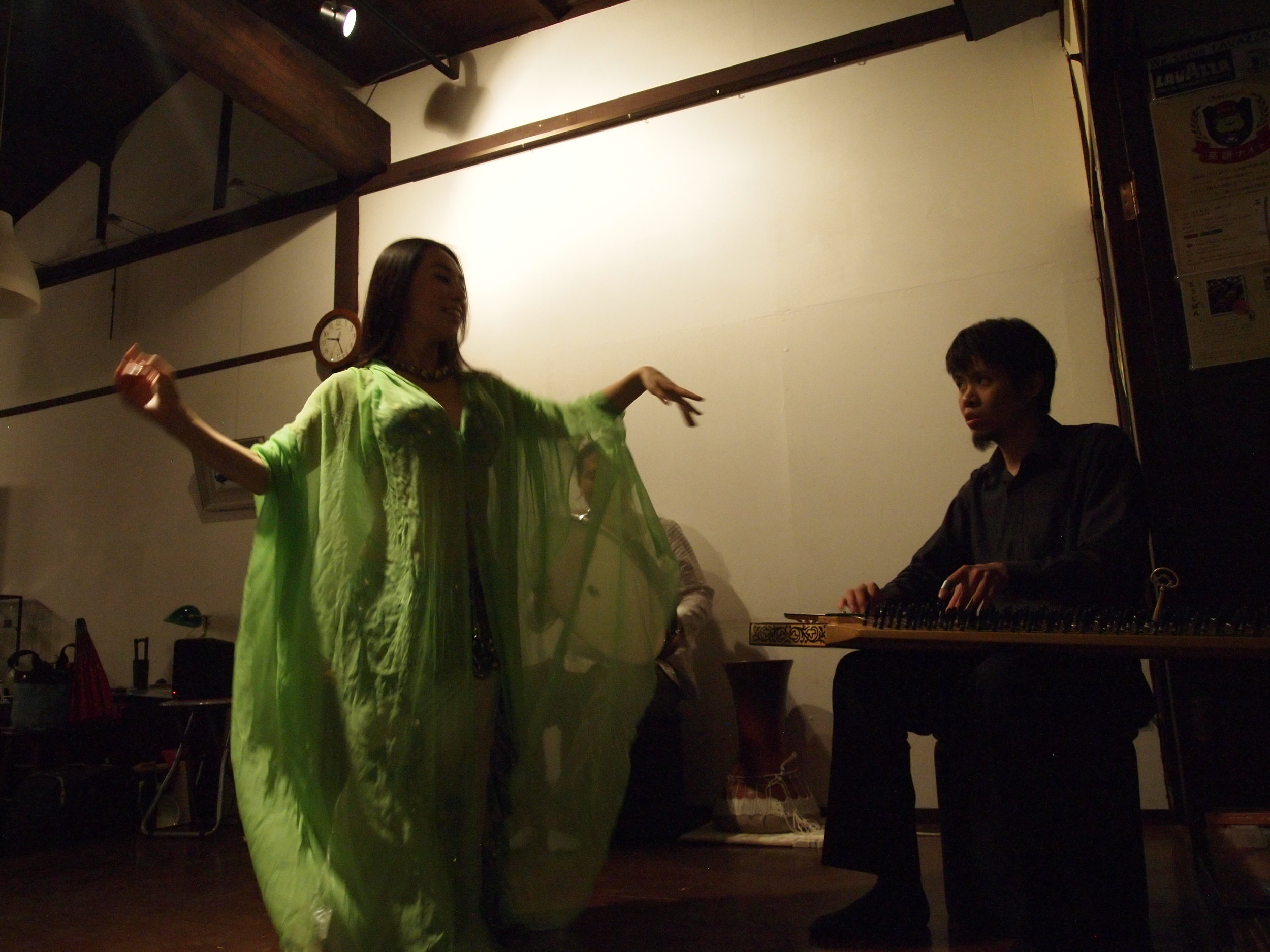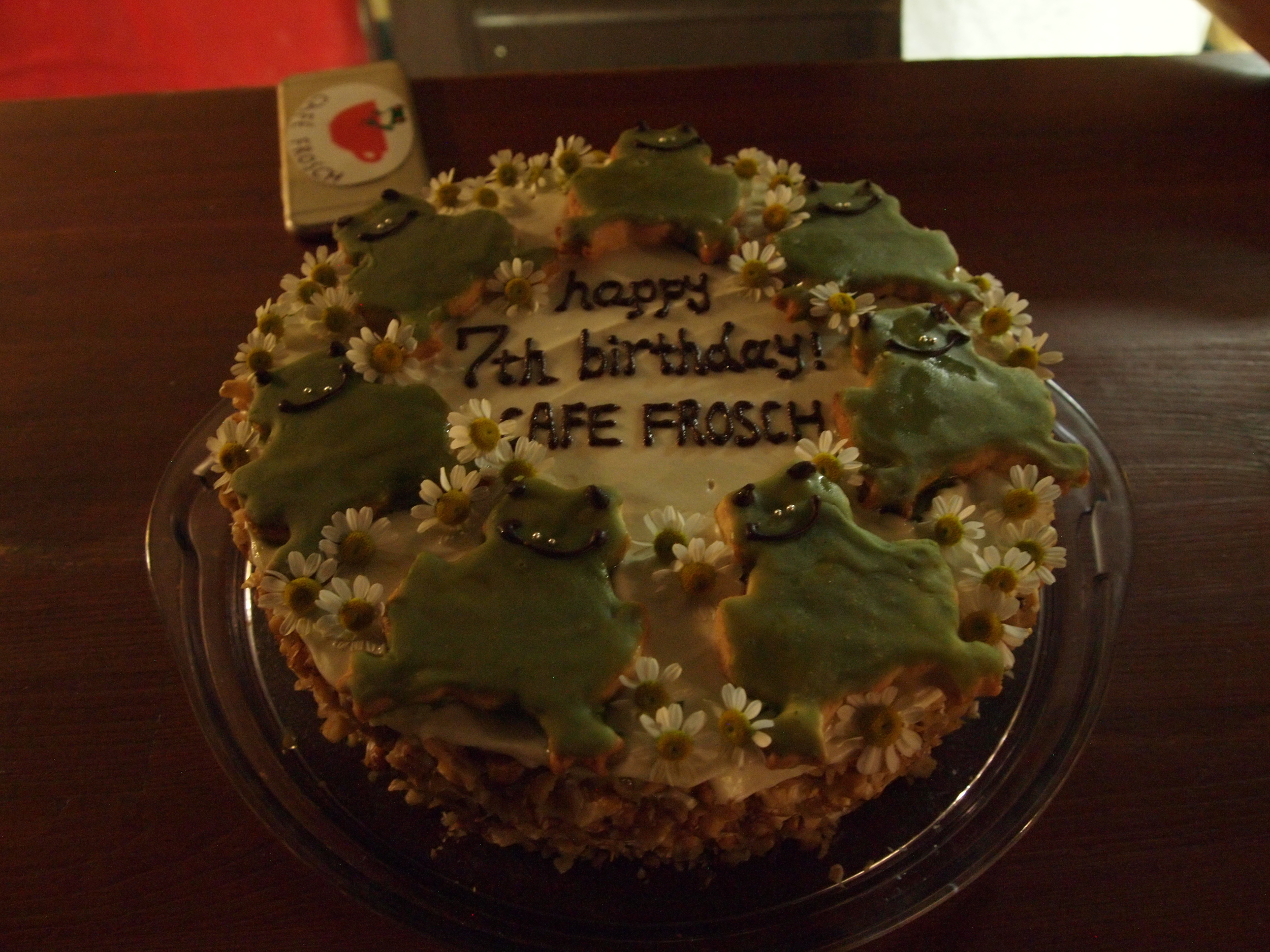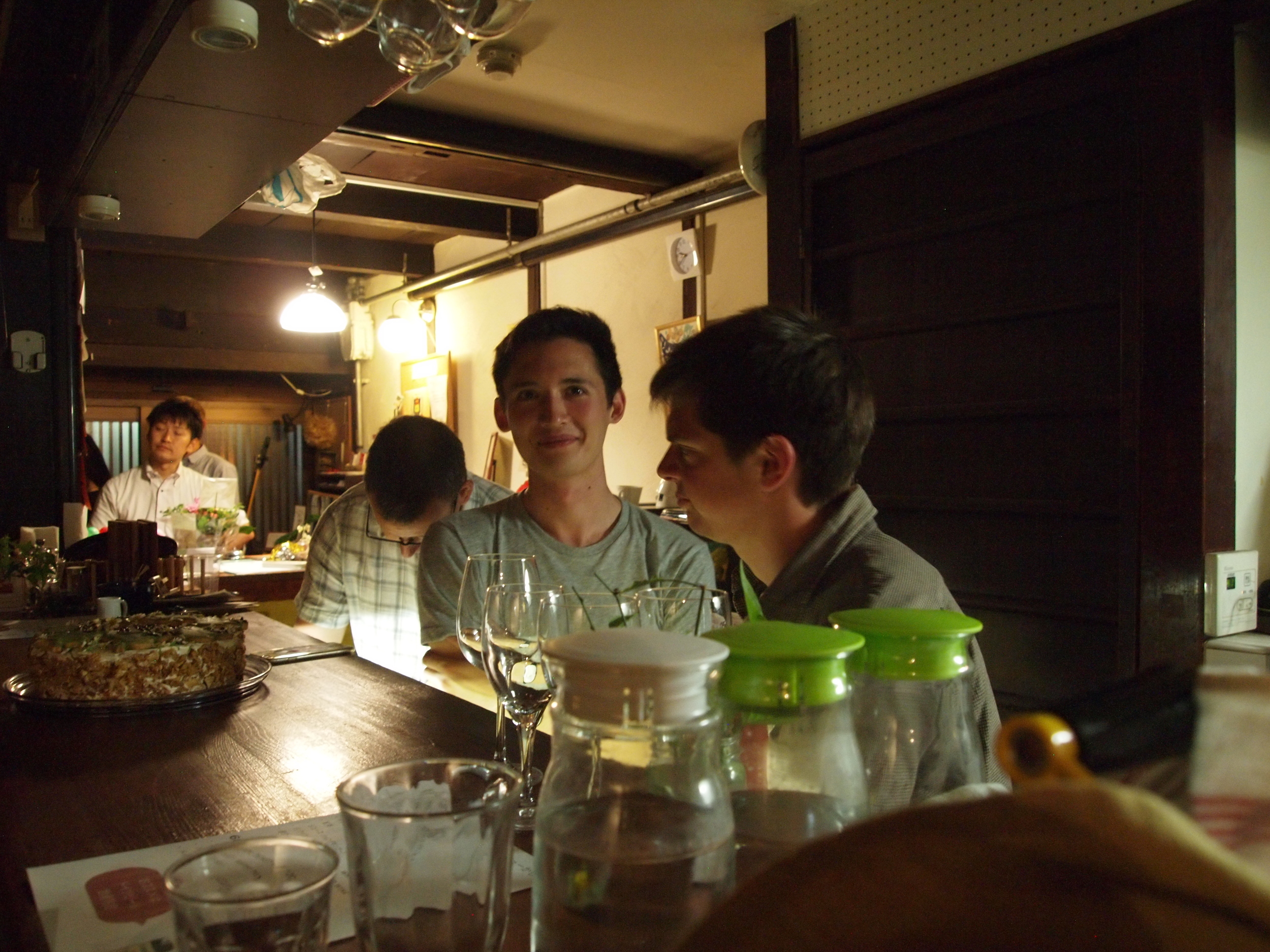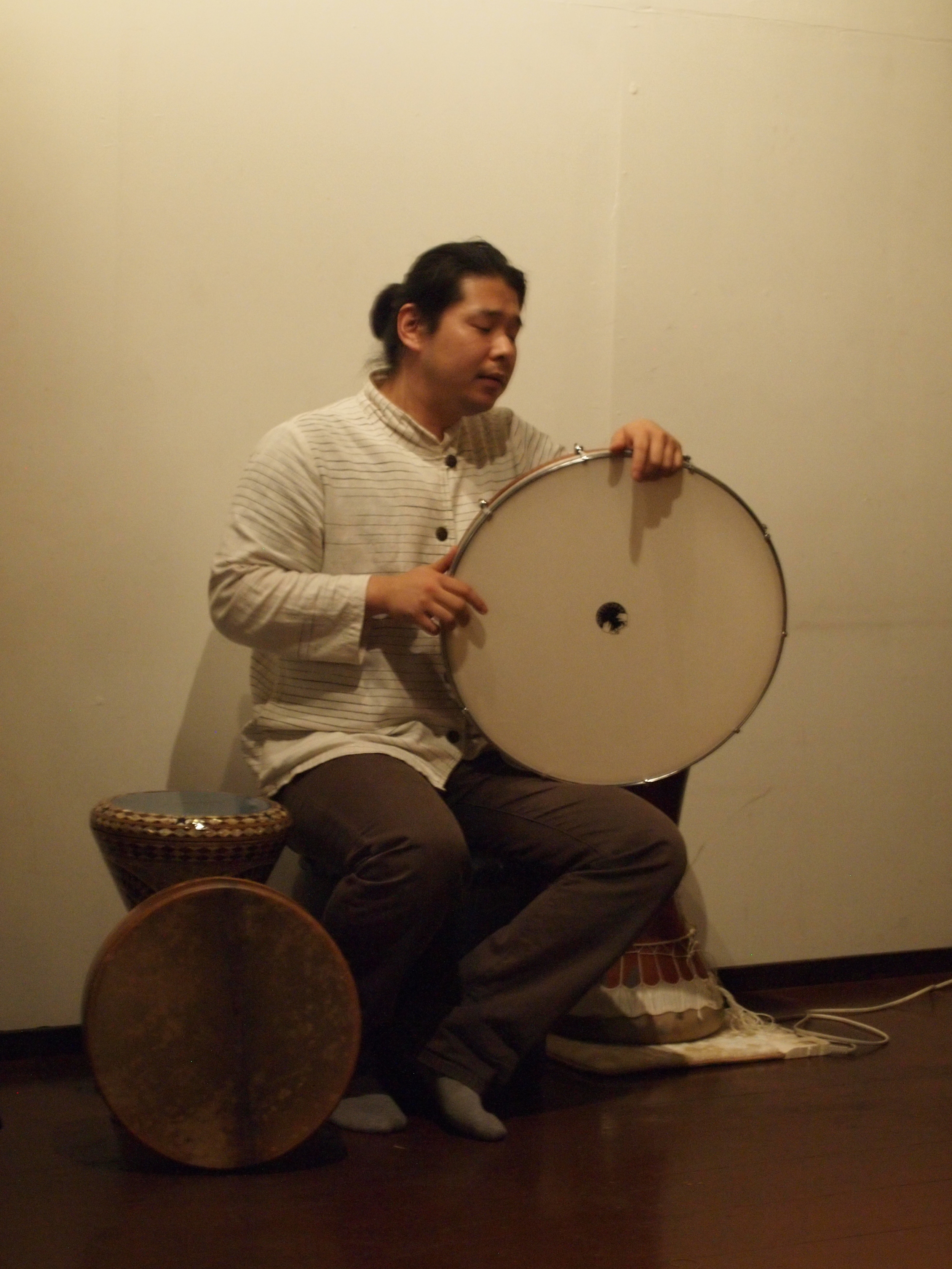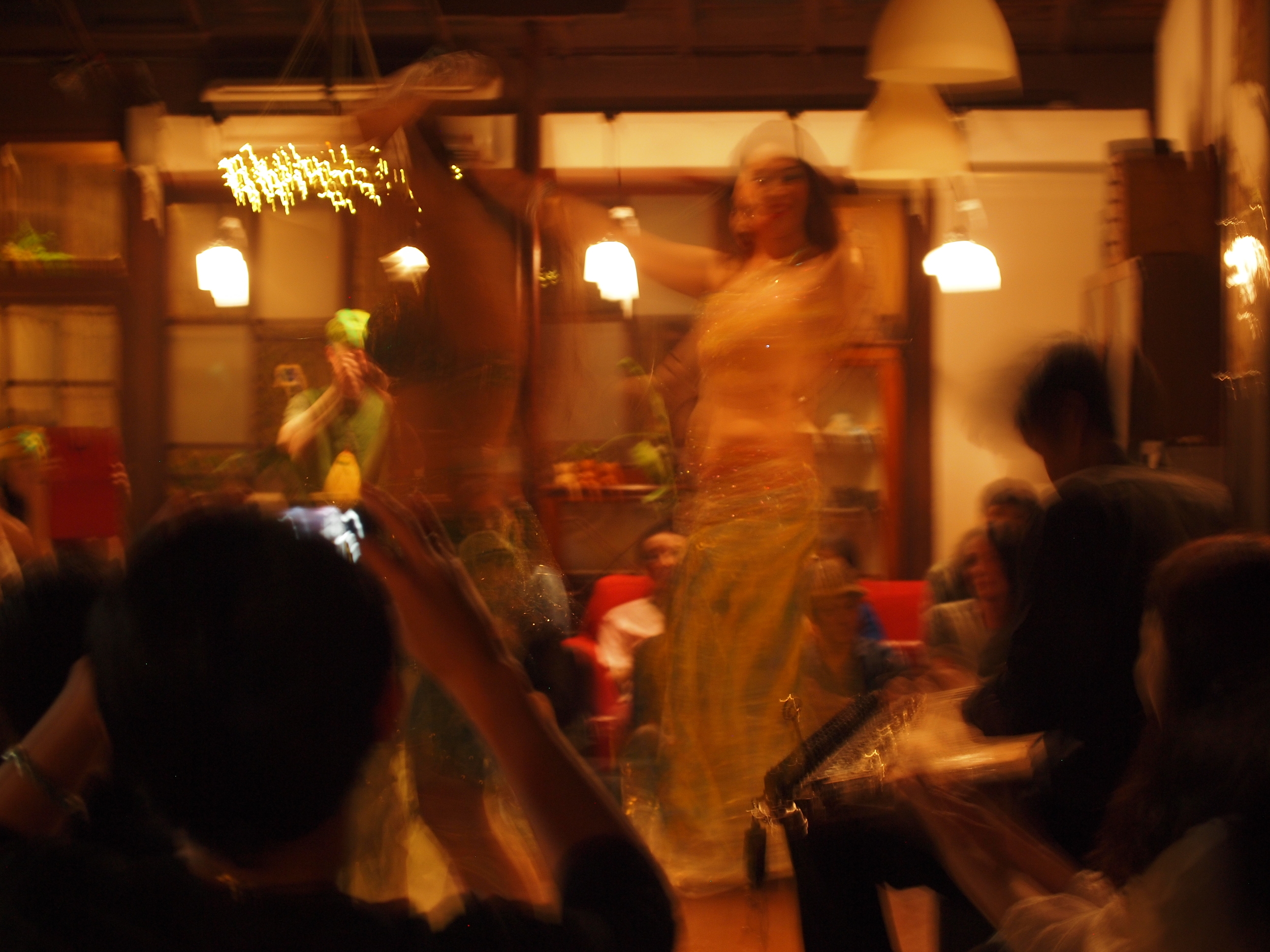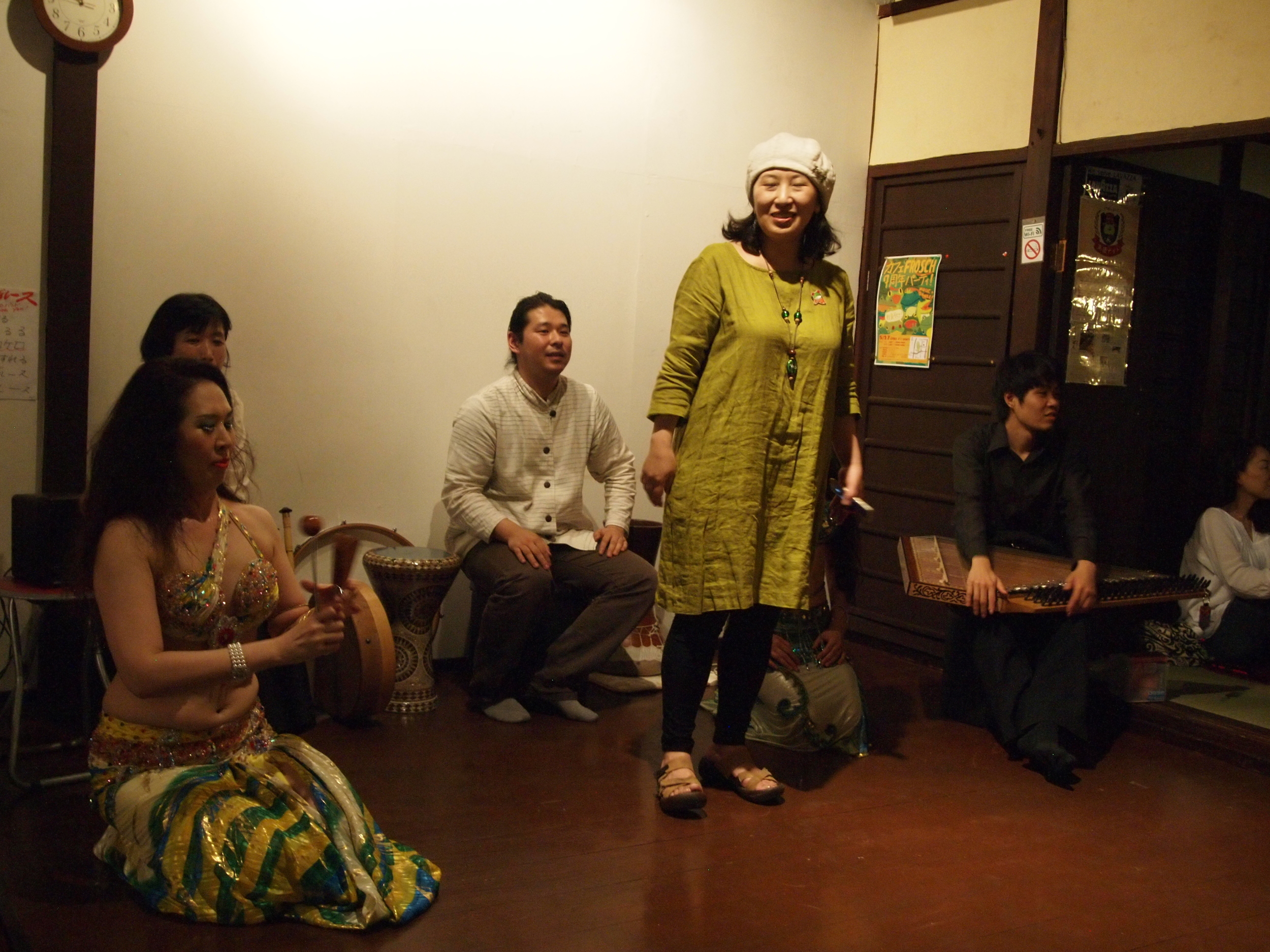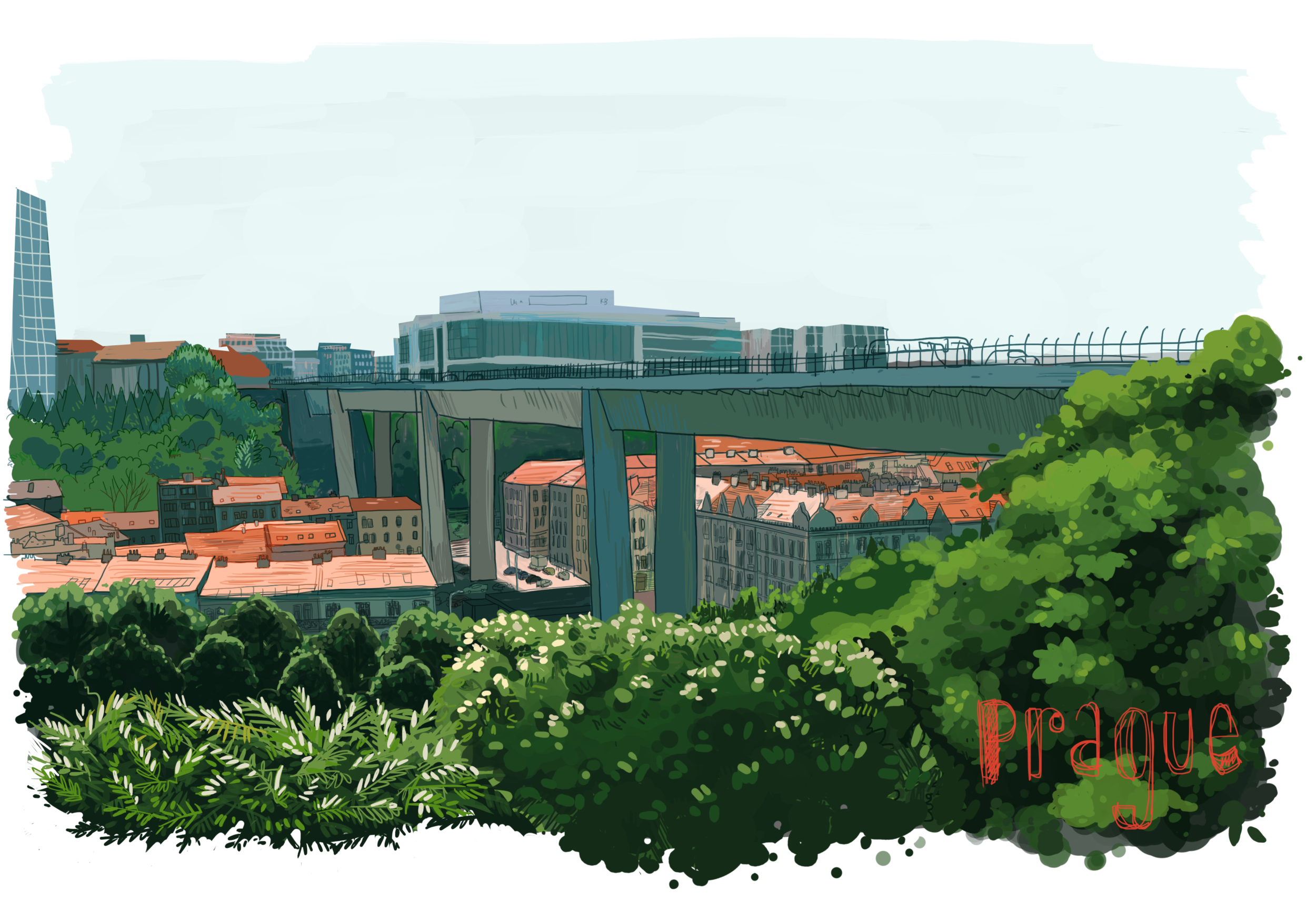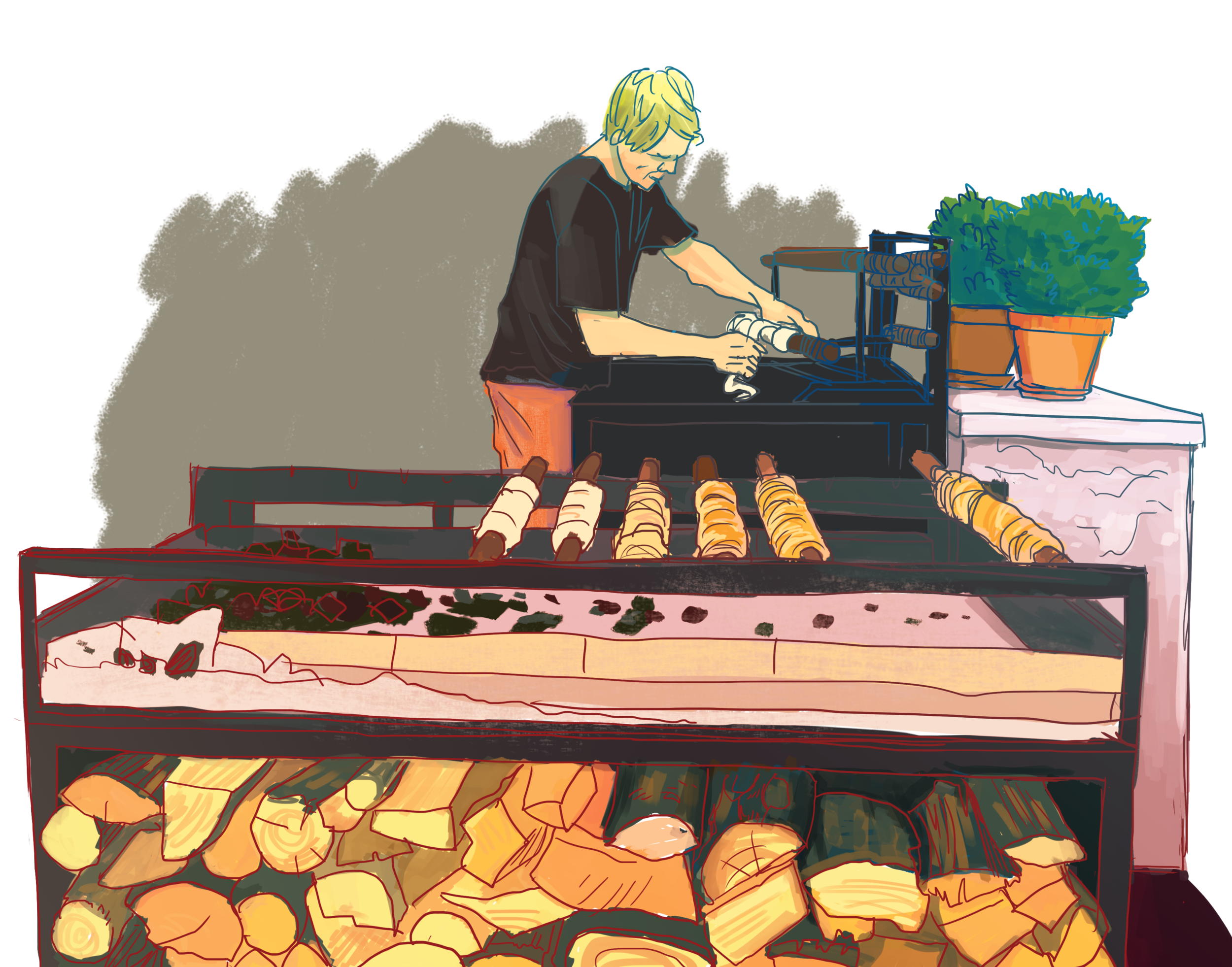The branches of the cherry blossom trees were speckled with tight little baubles when I headed up to Tokyo last month. For the most part they stayed that way for the duration of my time there. It might have nice to see the fluffy fireworks that broke out all along the Meguro river the following week, but somehow, that tension of being on the verge of a beginning was exactly the right tone for the trip.
I was kindly asked by the charming Mr. Ralf Rueller of The Barn Coffee Roasters to come and help him at the Tokyo Coffee Festival. Ralf is keen to plant a flag in Japan for The Barn, and this was perhaps the first real push for presence. The Barn was sharing a tent with their collaborator Standart Magazine, who it so happens I have also done work for. The new Japanese edition of Standart was fresh off the press and so it was perfect timing for them to spread the word and reach out to the coffee community in Japan. So in this context of familiar faces on new frontiers my role was basically to be as helpful as possible, whatever that might entail.
I arrived up from Kyoto all rosy on the Shinkansen on the Friday morning, got a taxi to PNB Coffee. The owner Peter and I didn't know each other, but somehow I ended up sort of making base camp in his cafe for the day, so we got to know each other reasonably well. As it happened, PNB, which is a carefully curated cafe of Scandanavian good taste, had already unwittingly become more of an EU outpost as Standart (Slovakia/The Netherlands) and The Barn (Germany) had had all their event stuff sent there in the days prior.
Peter and I talked Coffee Collective and paper stock while I waited for Ralf who was awol. When Ralf finally shown up, Oronamin C drink in hand - something he bought more out of bemusement than necessity - we got down to business of making sense of all the boxes. Then a bit of lunch with Peter - now it feels like I've known Peter for ages - and then the serious stuff of working out the grinds and pouring technique for all the coffees for the weekend. We did this until we were all over-caffinated and no longer able to tell wood from trees and then Ralf set about grinding the coffee while I finished the shopping. All of these rather humdrum tasks took a surprising amount of time, but by the end of the day, we were reasonably confident we were ready for the festival.
The next morning it was bright, sunny and as warm as you could hope for. I was first to arrive at The Farmer's Market in Shibuya. The market is terrifically well organised. It has great infrastructure for traders in place, just as you would see in established markets across Europe. As such, set-up played out like a symphony. (A stark contrast to the sea of chaos that was the festival at Shimogama Shrine back in January). I was joined by Kouhei Shintani of Sporty Coffee, Osaka. Another friend of The Barn, we basically met Ralf more or less around the same time. Along with Ralf, and the Standart guys, who would basically be running their own corner that was basically to be our team. Peter had warned us several times that we were going to be completely rammed with customers all day. Even knowing that I had taken that sort of lackadaisical Irish attitude that also regularly manifests itself at sporting events and other times of trial of: "Ah sure, it'll be grand. We can only do our best.". In my case, it may also be that once I saw someone cook a venison main course for 70 people in an ancient domestic-use fan oven that's left a lasting impression on me that anything is possible.
We were indeed drawing visitors before we'd even finished the taste check and the volume of customers quickly ramped up to full capacity. TCF had anticipated this, and implemented a highly effective queing system at a distance from our tent so that we didn't get crowded in front, allowing punters to pass easily and for us to get in and out if necessary. The staff also were great to regularly check our needs. This allowed us to focus on our own tight system and get people served as fast as possible. Ralf was keen to introduce the coffees to the customers and was a bottomless well of interesting information but it was difficult to deliver both this and the actual coffee at a pace satisfactory to everyone. This is where the symbiotic relationship with Standart shone: people waiting for coffee could get drawn into the magazine. People perusing the magazine would also discover the coffee.
The other thing that made what could have been a long flat-out slog into a pleasantly busy and energising day was the fact that we were not alone: we had a gold-star team of volunteers that helped absolutely every detail fluid and stress-free. Pouring coffee and managing the queue to either mini tasting cup or normal-size coffee, switching in at the bar so that everyone could grab a break. It was really a dream.
We wrapped up the day on a high note and then there were a few hours to kill before the Standart Japan launch party at Blue Bottle Coffee in Meguro. I had scouted out a clean and modern sento nearby and so I passed a restorative hour or so there before perambulatlng up to Blue Bottle. The Meguro Blue Bottle is a curious building: the initial impression is a big house-y shape of glass and white. You see multiple layers and levels of space at once, and with the industrial aesthetic gives a sense of it as a hive for humans. I was especially amused by the "event pit" in the back. A concrete-cast space below street level with no real furnishings other than a few trees in oversize planters. Un-wishing to be left vulnerable out in the open, people line up neatly along the walls. Given that this was industry-based gathering where most people fit into the same age/lifestyle bracket, attendees were also for the most part, uniform in dress. (While we're on the subject of dress, I notice that the cobalt blue jacket is fashionable amongst men in a big way. I call this the factory foreman coat or the Bill Cunningham look depending on length of jacket. Curious to know if either of those were actually the inspiration for this trend).
There was beer and coffee and coffee-inspired bossa nova (?). Everyone knew more or less everyone. Lots of nodding of heads. Many people having seen each other several times already that day. Michael and Toshi made their speeches and Standart Japan was officially launched. It's been roughly about a year since I first did work for Standart. They have come on at dazzling speed in that time. It was great to be able to be there at start of something new and special for them. Michael and I met in person for the first time late last year, two Europeans in Kyoto, and bonded over love of Japan and also martial arts. It's bizarre sometimes, how the dots join up.
Sunday was much the same as Saturday except our teamwork had levelled up and things went so smoothly it was almost relaxed, even though the stall was busy all day long. I really have massive appreciation for how amazing and professional our team was, considering we didn't even know each other before the event. My experience of the specialty coffee world is that it's full of intelligent, charming, friendly people, and I am very happy to be part of it. The breaking down of the stall at the end of the event went smoothly and we all went our separate ways. In the Standart guys' case, back to Europe immediately. Everyone gave positive feedback of their experience and were willing to help again in the future.
On Monday, for the third day in a row, the weather was superlative, and I had a free schedule. I started at Naka-Meguro station, had a pretzel croissant (latest pastry fad?), visited Onibus Coffee and then wandered up along the river in the sun, generally headed towards Yoyogi Park. Ralf had a cupping event at PNB at noon. By sheer coincidence, I was drifting near PNB around this time so I dropped by to see how everything was. It was about ten minutes before starting; Ralf had apparently had some trust issues with the electric grinder and as result, decided to grind all ten coffees on his Commandante hand grinder. When the participants arrived, Ralf, Peter and I were still engaged in some kind of coffee-grinding relay race. Ralf stalled with first a welcome, followed by a stream which then became a torrent of information about coffee processing. There was a glassy silence which was hastily filled in with a translation and the atmosphere warmed up once again. Ralf encouraged the participants to actually get involved in the process of the cupping, not just tasting. I found this interesting and bit seem to make first-timers feel less intimidated. It was a good turn out and lots of people were keen to talk to Ralf. After this I slid off back into the sunshine and had an afternoon of adventure in Tomigaya.
Tuesday was rainy and I hit a few places I'd been keen to see before rendez-vous with Ralf at The Local. We hung out with the lovely people there brewing coffee and talking a little business also. After that I escorted Ralf on a cafe tour until we admitted that we just wanted to be dry and warm and recover from the weekend. Wednesday we headed back to Kyoto in the morning to continue our coffee adventure tour with Cafe Frosch, Kurasu Kyoto and Weekenders Coffee and then with Elmers Green and Sporty Coffee in Osaka. It was really a singular week, even for me where normally work and fun generally mix into a grey area, I had a good time being a sort of switch board operator linking up people and bringing coffee-centric community fun.





















